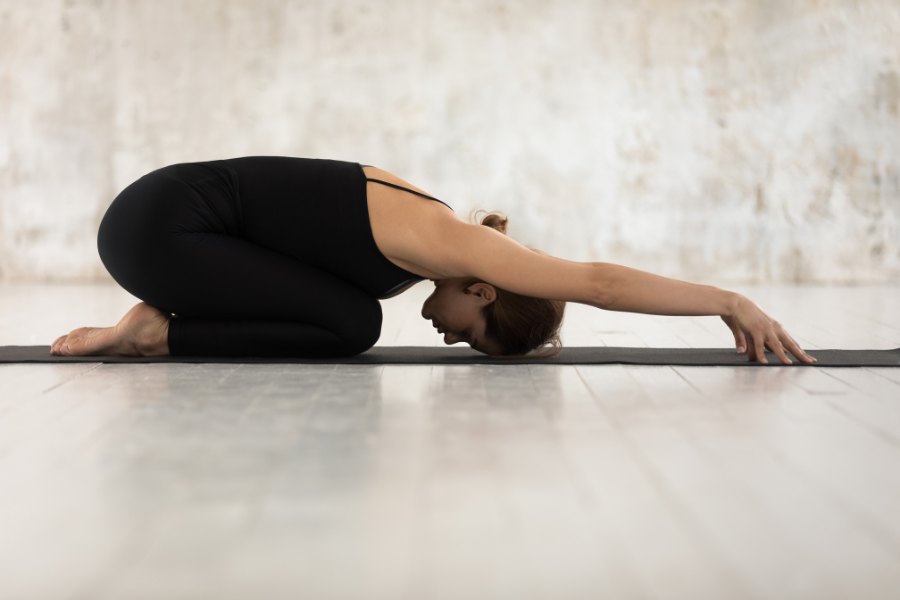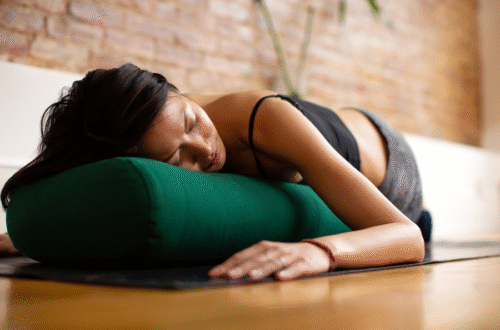I used to think hormonal shifts were just something we had to “deal with.” But after years of feeling off—fatigued, moody, and bloated—I realized that hormonal balance isn’t just about supplements or diets. It’s about movement. And yoga? It works better than I ever imagined.
If you’re navigating PMS, perimenopause, or just want to feel more grounded in your body, this article is for you. Let’s talk about how yoga supports hormonal balance in ways that are gentle, effective, and backed by science.
How Hormones Affect Your Daily Life
The Role of Hormonal Balance
Your hormones regulate everything from sleep and mood to metabolism and fertility. When they’re out of sync, you feel it—physically and emotionally.
Common signs of hormonal imbalance:
- Irregular periods
- Fatigue
- Mood swings
- Weight fluctuations
- Brain fog
Maintaining hormonal balance helps you feel energized, emotionally stable, and metabolically efficient.
Why Movement Matters for Hormonal Balance
Exercise Isn’t Just About Fitness
Movement stimulates the endocrine system, which controls hormone production. According to a 2021 study in Frontiers in Endocrinology, regular physical activity improves insulin sensitivity, reduces cortisol, and supports estrogen regulation.
But here’s the catch: not all movement is created equal. For example, high-intensity workouts, such as HIIT, do indeed cause a spike in cortisol, which is the body’s primary stress hormone. This response is normal—cortisol rises temporarily to mobilize energy and manage the physical stress of exercise.
For most healthy women, including those over 30, this temporary rise in cortisol does not cause lasting harm and is actually a part of healthy adaptation—helping with workout recovery, improved metabolism, and physical resilience. However, repeated high cortisol from excessive intense exercise, especially without adequate rest and nutrition, can contribute to hormonal imbalances. In women, chronically elevated cortisol may disrupt the balance of reproductive hormones like estrogen and progesterone, potentially impacting menstrual cycles, mood, and fertility. The effect can be more pronounced as women age or enter perimenopause and menopause, when hormonal regulation is already shifting, and baseline cortisol may be higher.
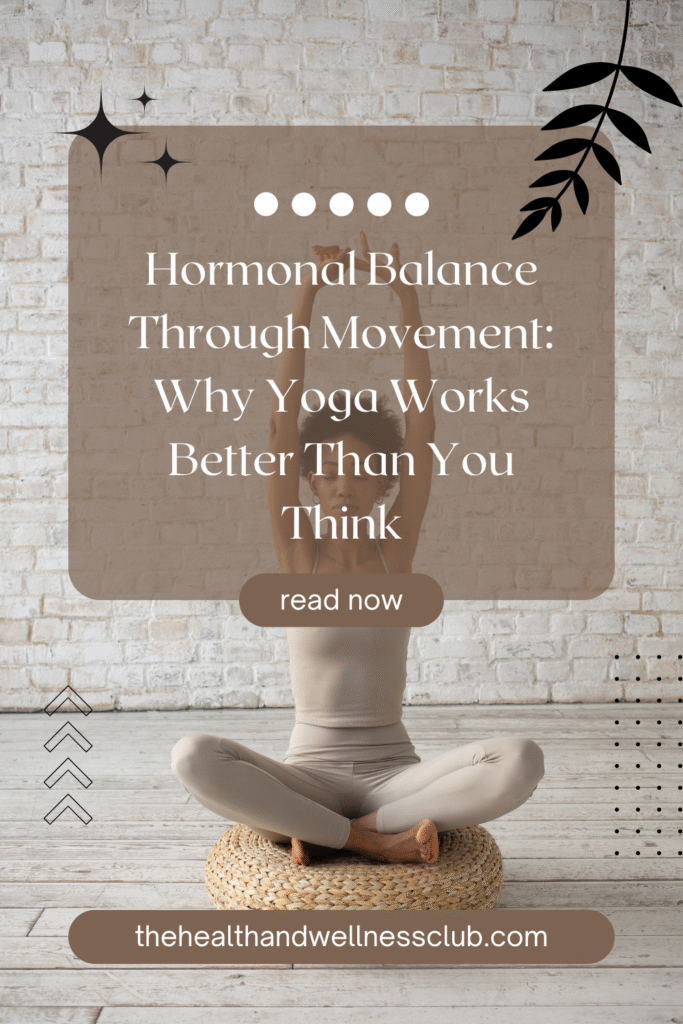
Yoga’s Unique Impact on Hormonal Balance
Gentle, Intentional, and Holistic
Yoga combines breath, movement, and mindfulness—all of which support hormonal balance naturally.
Scientific benefits of yoga for hormonal health:
- A 2025 study found that yoga reduced menopausal symptoms and improved estrogen levels.
- A 2022 review showed that yoga lowered cortisol levels, alleviating stress-related negative impacts on thyroid function.
Why Yoga Works Better Than You Think
Unlike intense cardio, yoga calms the nervous system. This helps regulate the hypothalamic-pituitary-adrenal (HPA) axis, which controls stress hormones like cortisol and adrenaline.
Key takeaway: Yoga doesn’t just stretch your body—it recalibrates your hormonal system.
Best Yoga Poses for Hormonal Balance
1. Child’s Pose (Balasana)
Why it helps: Calms the nervous system, supports digestion and grounding
How to do it:
- Kneel on the floor, big toes touching, knees hip-width apart.
- Sit back on your heels.
- Fold forward, bringing your forehead to the mat.
- Extend your arms in front of you (or alongside your body for a more restful version).
- Breathe deeply and relax your shoulders, jaw, and eyes.
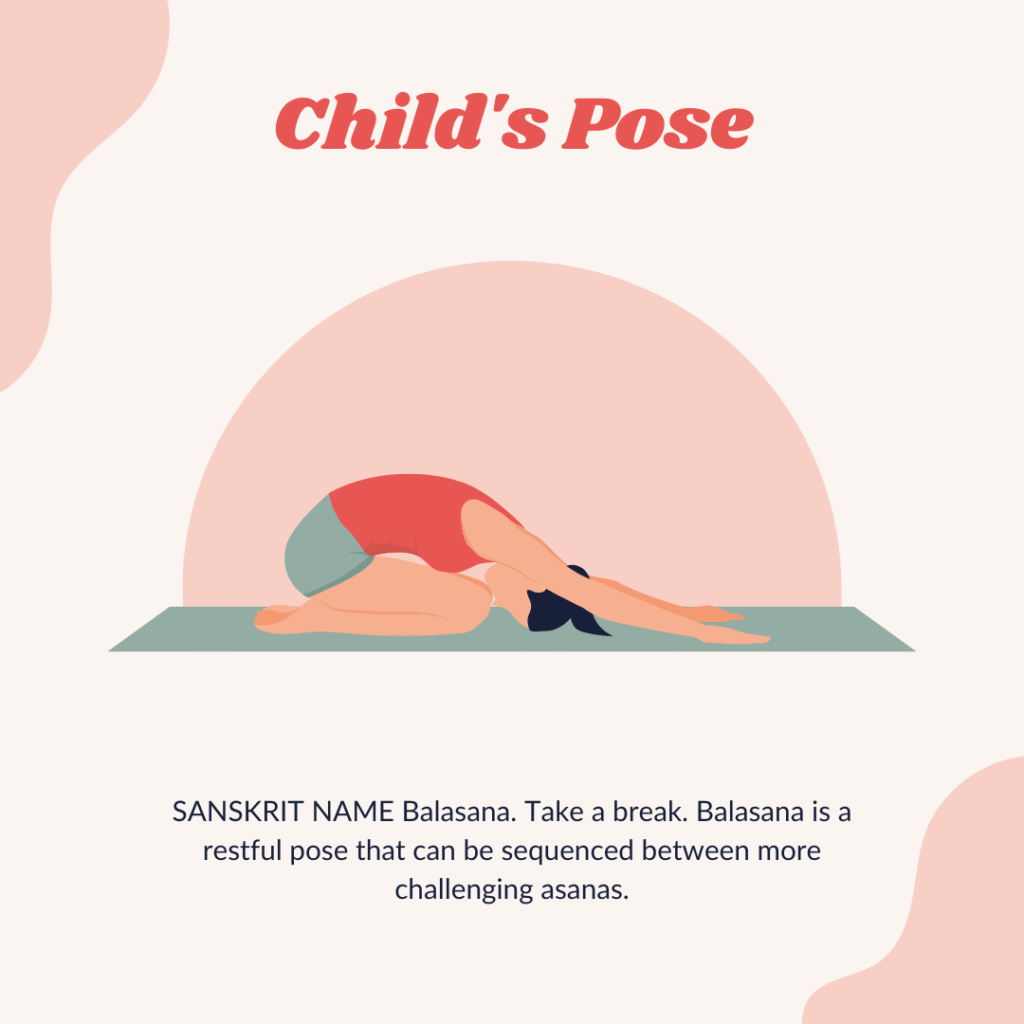
2. Bridge Pose (Setu Bandhasana)
Why it helps: Opens the chest and stimulates the thyroid gland.
How to do it:
- Lie on your back, knees bent, feet hip-width apart and flat on the floor.
- Place your arms alongside your body, palms facing down.
- Press into your feet and lift your hips toward the ceiling.
- Keep your thighs and feet parallel, and clasp your hands under your back if comfortable.
- Hold for 30 seconds to 1 minute, then slowly lower down.
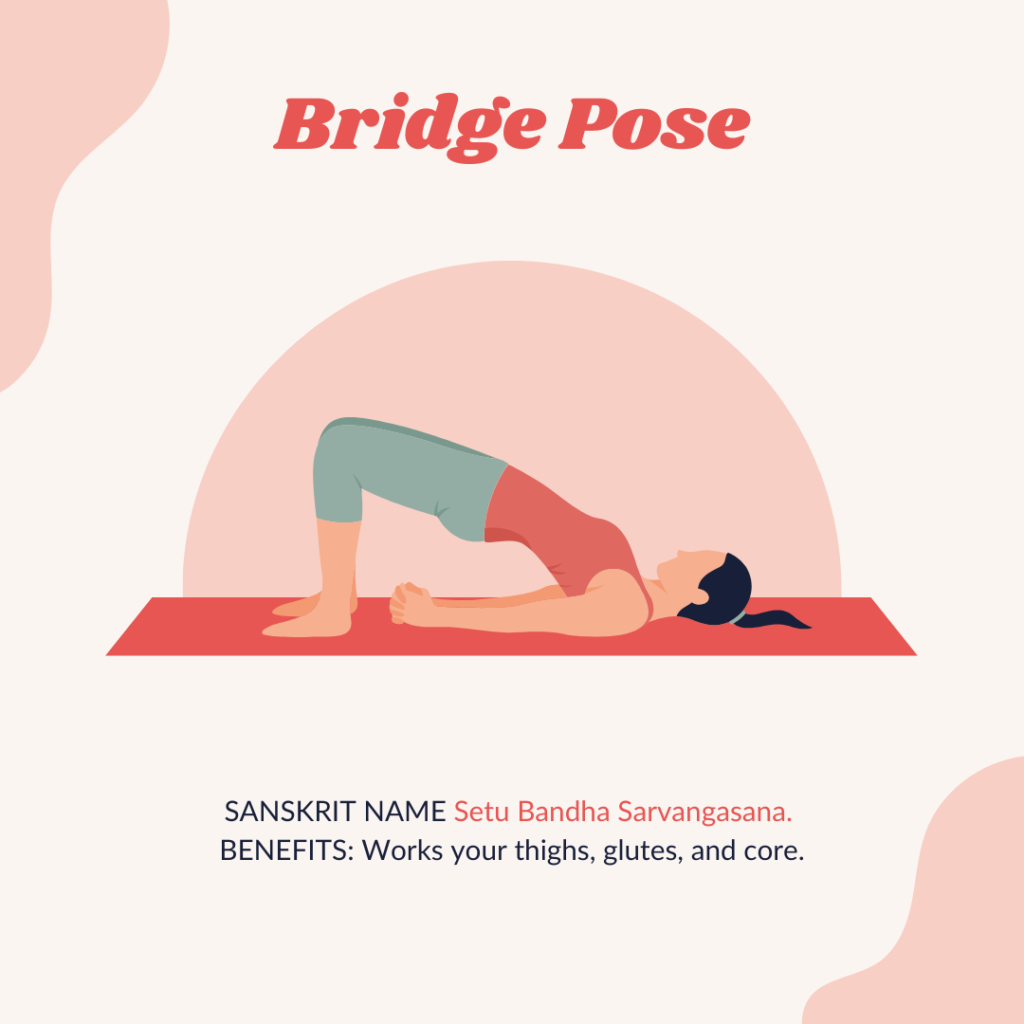
3. Reclined Butterfly (Supta Baddha Konasana)
Why it helps: Opens the hips and supports reproductive organs. Great for hormonal balance and emotional regulation.
How to do it:
- Lie on your back with knees bent and feet flat on the floor.
- Let your knees fall open to the sides, bringing the soles of your feet together.
- Place your arms by your sides or on your belly.
- Use cushions under your knees for support if needed.
- Close your eyes and breathe deeply.
- Hold for 1–5 minutes.

4. Cat-Cow (Marjaryasana-Bitilasana)
Why it helps: Supports adrenal and nervous system regulation. Improves spinal flexibility. Stimulates digestion and circulation.
How to do it:
- Start on all fours with shoulders over wrists and hips over knees.
- Cow Pose: Inhale, arch your back, lift your tailbone and gaze up.
- Cat Pose: Exhale, round your spine, tuck your chin and draw your belly in.
- Continue flowing with your breath for 5–10 rounds.
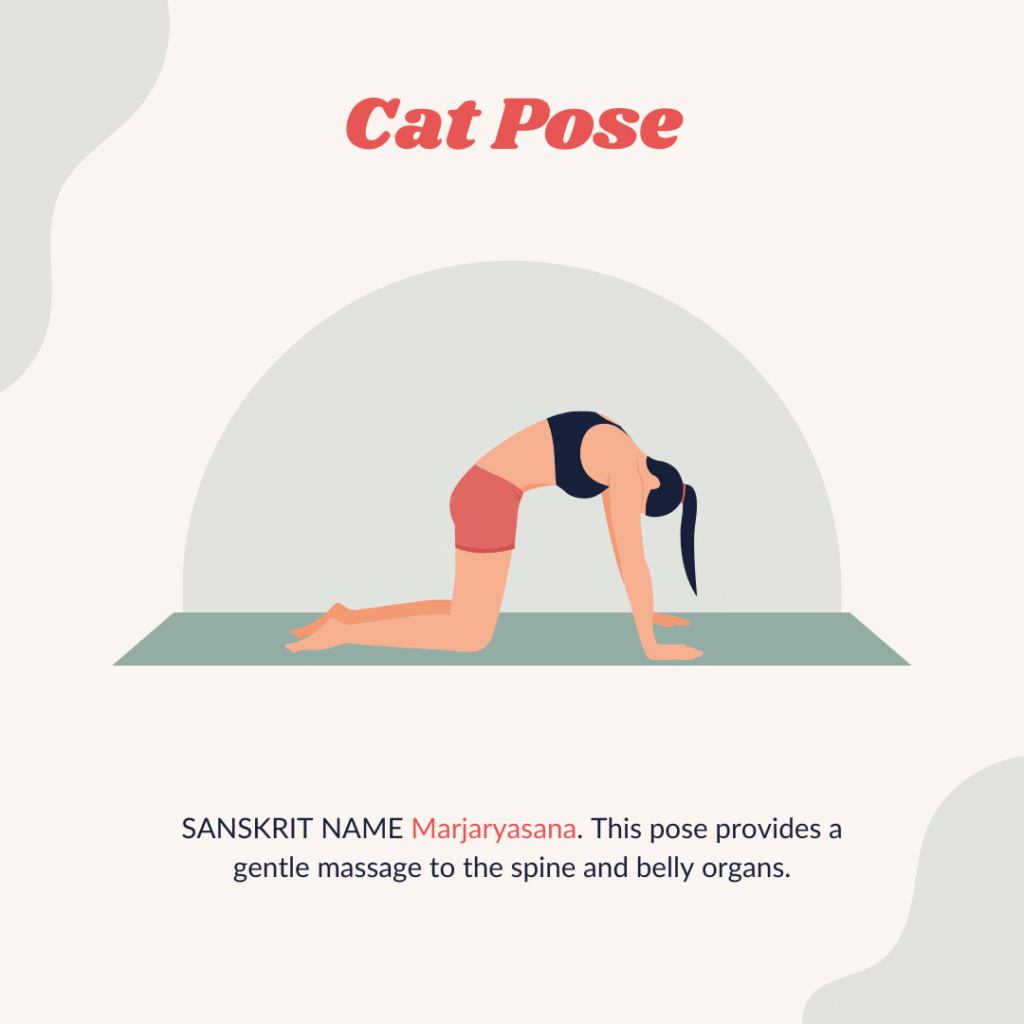
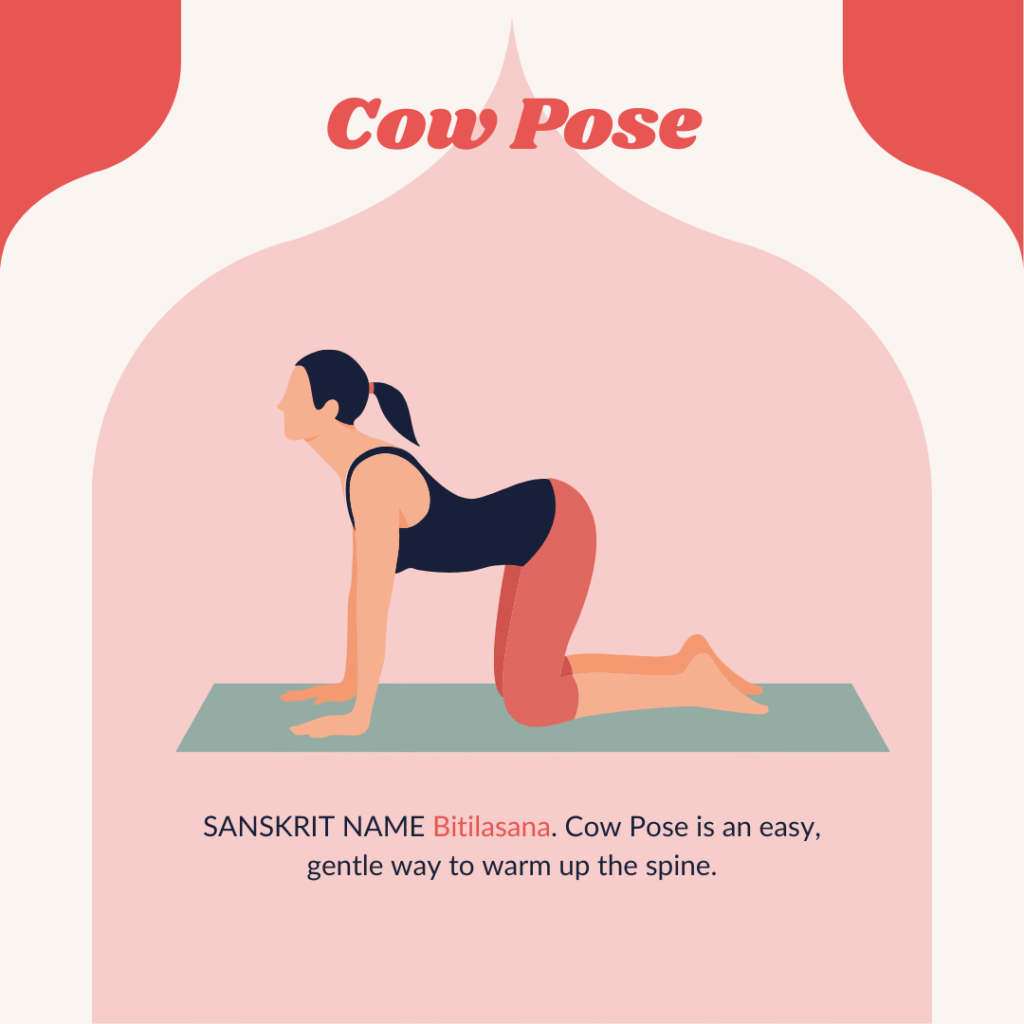
Breathwork and Hormonal Balance
Pranayama for Endocrine Support
Breathwork activates the parasympathetic nervous system, which helps regulate stress hormones.
Try this: Alternate nostril breathing (Nadi Shodhana)
How to do it:
- Close your right nostril and inhale through the left.
- Switch and exhale through the right.
- Repeat for 5 minutes.
Breathing exercises like pranayama lower stress hormones by activating the parasympathetic nervous system, which helps regulate the hypothalamic-pituitary-adrenal axis, ultimately supporting endocrine balance. This effect has been documented as decreasing anxiety and improving physiological stress markers , such as cortisol and adrenaline levels.
My Personal Routine for Hormonal Balance
I end my day with 10 minutes of gentle yoga and breathwork before bed. I focus on poses that open the hips, stimulate the thyroid, and calm my nervous system. On days when I feel off, I will double down on the breathwork, which calms my nervous system and promote a better sleep.
This routine has helped me feel more emotionally stable, sleep better, and reduce PMS symptoms. It’s simple, sustainable, and totally doable—even on busy days.
Tips to Support Hormonal Balance Through Yoga
Keep It Consistent
You don’t need an hour-long flow. Even 10–15 minutes a day can support hormonal balance.
Listen to Your Body
Some days call for movement. Others call for stillness. Honor what your body needs.
Pair Yoga with Nutrition
Support your practice with hormone-friendly, anti-inflammatory foods, like flaxseeds, chia seeds, leafy greens, and omega-3s.
Movement Is Medicine
If you’re looking for a natural way to support hormonal balance, yoga might be your secret weapon. It’s gentle, effective, and deeply nourishing—especially for women navigating hormonal shifts.
Start small. Stay consistent. And trust that your mat holds more healing than you think. To start yoga, check out our beginners yoga poses for a detail breakdown on how to do them right.
